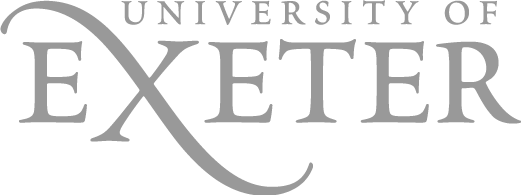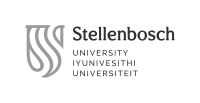Su2201 Modernism across the Arts
Professors
Schedule
Course description
MODERNISM: Dazzling, scandalous, “new”—always (still!) reinventing itself. One of the reasons why modernism is endlessly fascinating is that artists (writers, painters, composers, filmmakers, dancers, in short, visionaries of new worlds) hung out together, conversed, envied and influenced one another, collaborated, parodied others, often refashioned themselves, capturing ephemeral beauty (even finding beauty in repulsive realities), making outrageous claims (“burn the libraries!”), and offering lucid diagnoses of their times.
This course places international modernism in an intermedial perspective, presenting it as a broad conversation among international artists across various art forms. In addition to reading slowly and patiently major literary works by writers such as Baudelaire, Mallarmé, Eliot, Kafka, Stein, Woolf, Wat, Rilke, students will enhance their understanding of modernism through exposure to painting (Matisse, Picasso, Marc, Kandinsky, Chagall, Lam, Schoenberg), sculpture (Rodin, Brancusi, Giacometti), music (Débussy, Stravinsky, Schoenberg, Berg, Gershwin), dance (Diaghilev and the Ballets Russes) and film (Ruttman, Cavalcanti).
We will approach modernism as a body of reactionary artifacts, that is, as works of art that took a stand against bourgeois morality, against fossilized ways of thinking enshrined in cultural traditions, against developments of the Enlightenment project that had led to two world wars and colonialism. Students examine the ways avant-garde artists challenged the ethical implications of conceptions of language, art, life and community deemed inimical to human freedom (of expression, of inter-racial association, or association across social classes), and the limitations of a central modernist imperative (“make it new”). We will be mindful of our Venitian surroundings throughout, and we’ll begin and end with artworks and literary texts inspired by the city.
Virtual component
We will connect over Zoom on July 14th 2022 to say hello and prepare for the course. Prior to our meeting, I encourage you to read as much as you can of Otto H. Bacher’s 1908 delightful book With Whistler in Venice, which includes many reproductions of Whistler's work and of etchings and photographs by the author. As an introduction both to Venice, and to the practice of professional looking that we’ll refine in this class, you should also spend some time with John Ruskin’s famous The Stones of Venice. I recommend reading chapter 1 “The Quarry” and getting a sense of the architecture of the book itself. You’ll find a summary of Ruskin’s project here.
Teaching methods
This is a small seminar in which we will do a lot of close reading of artistic objects (paintings, music, film, dance, literary texts), watch some performances, discuss the historical background, reception, aesthetic and formal features, and impact (aesthetic, social, political) of the artifacts on the syllabus. Classes will typically be a combination of student presentations, discussion of various aspects of the texts based on webposts, screenings and analysis of clips, brief lectures, in-class writing and workshops of student projects. A thorough engagement with the readings, a thoughtful manner of presenting and discussing one’s ideas in class, as well as respect for our differences of opinion are crucial for the optimal unfolding of the course.
Course aims and assignments
The aim of this seminar is to facilitate your discovery and exploration of the rich artistic period known as modernism. Your assignments are designed to help you engage with different artistic mediums, pay close attention to the specificity of each, get over your inhibitions (if you have any) about writing on painting, texts, music, film, sculpture, and… let your imagination go a little wild.
There are no essays to write in this seminar; instead, you will compile a portfolio of various short pieces of work, as described in the detailed overview below. We have a total of 8 sessions; while you are always expected to familiarize yourselves closely with the materials assigned for each class, you may skip the written assignments twice, but not on the last day of class (in other words, you must engage, in writing, with Death in Venice!). Unless otherwise noted, you are free to select from the material assigned in any given session. For a Monday session, you will need to submit your work by 6 p.m. on the Sunday prior to class; for a Thursday class, please submit by 6 p.m. on the Wednesday before.
Imaginary dialog (group project): this is an opportunity to do research and be imaginative, in collaboration with other class participants. Your group presentation should take the form of a staged dialog between the artist(s) and someone else (another artist or two, a critic or two, whatever other artistic personality you think might contribute interesting ideas). Include in some form information about the artist, about the work (theme, structure, ideas, premiere) and its critical reception, as well as some close reading. Each student should contribute 1.5-2 pages of text, and should make sure that the final text identifies clearly the contribution of each participant. (I will make available some samples so you get a sense of the possibilities.) The entire text of the presentation should be uploaded to Moodle under Presentations by 6 p.m. on the day before class. You will sign up for these in the first week of classes.
Venice close-up: This brief assignment is an opportunity to bring the art of close attention we practice in our seminar to bear on the exquisite privilege of spending time in Venice this summer. We’ll begin each class with a 5-minute presentation by one seminar participant, in which they’ll share with the rest of us one discovery they’ve made and researched in the city. It can be a very famous place or a more obscure one, up to you; but do bring a photo or two, and have a story about your place of choice (its history, why it’s special, why it struck you, whether there’s art associated with that spot, anything you might find of interest). You’ll sign up for these at the beginning of class, and this activity will be part of your course participation grade.
Reflection on your course experience: this will be an opportunity for each student to reflect on your discoveries and collect your thoughts about the mosaic of artifacts and ideas we’ll be exploring throughout this summer semester. Please submit, via Moodle, a first installment after week 2 (by Saturday at 6 pm) and at the end of week 4 by class-time (2 pages x 2, 12 font, double-spaced).
Grades and attendance
All students are expected to attend all class meetings, having familiarized themselves with the materials assigned for that day, completed the required assignments, and ready to participate actively in class discussions. Your final grade will be based on the quality and timely submission of your written assignments (6 x 10%), contribution to group presentation (20%), course reflection, “Venice close-up,” and oral participation (20%).
Laptop policy: Unless otherwise noted in class, no laptops are necessary during our class meetings – please keep all electronic devices stored
Resources and bibliography
Most assigned texts (see detailed overview on Moodle) will be available on the course website under Resources as .pdf documents. The rest are in the public domain and available online, hyperlinked. Students are also encouraged to do some exploring of their own, for instance in excellent databases such as ARTstor and Oxford Art Online. (We’ll discuss resources in class).


















